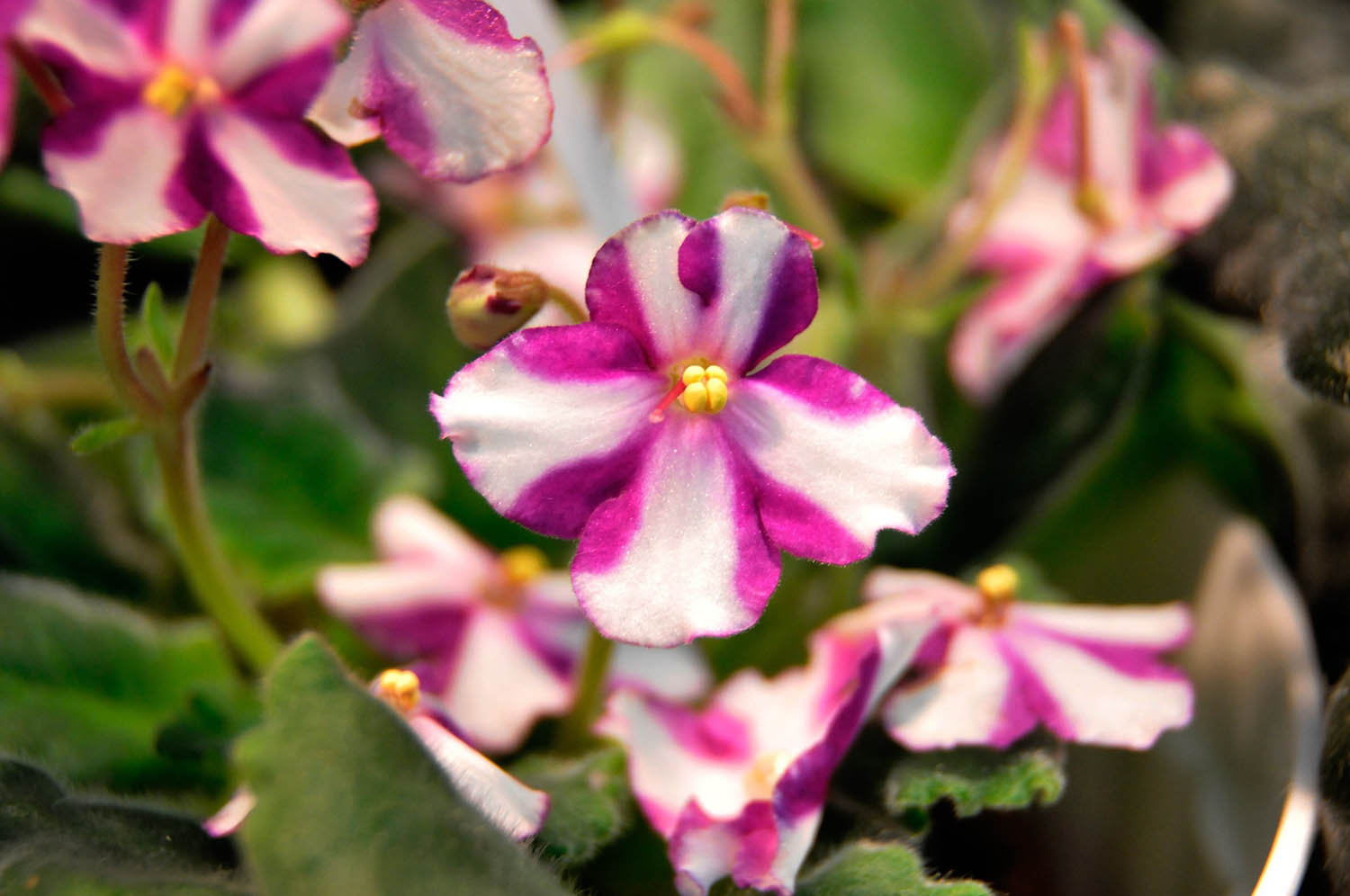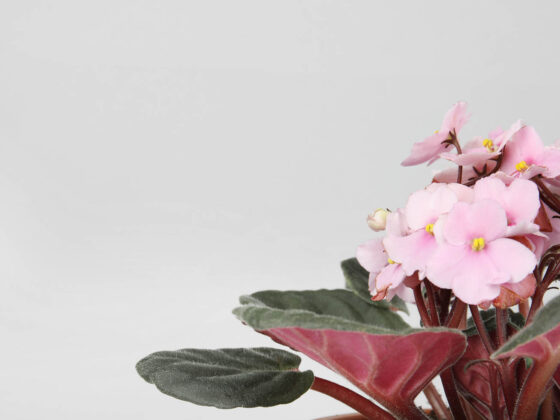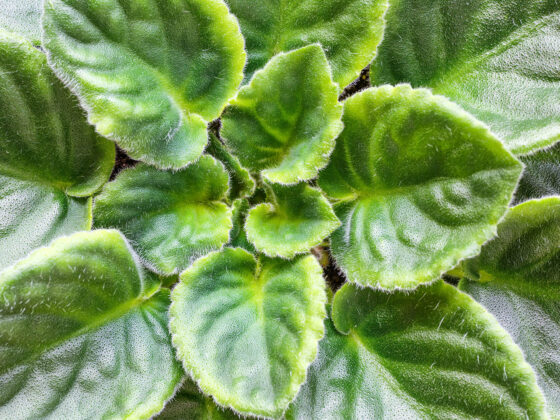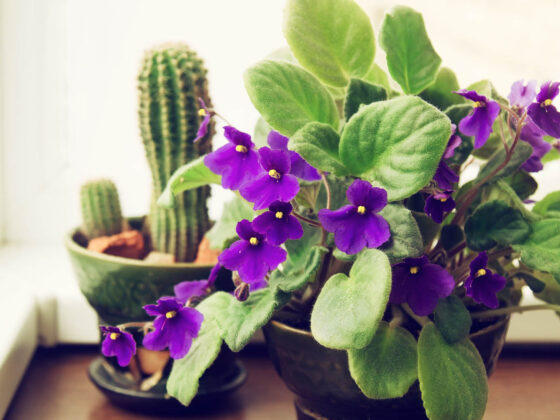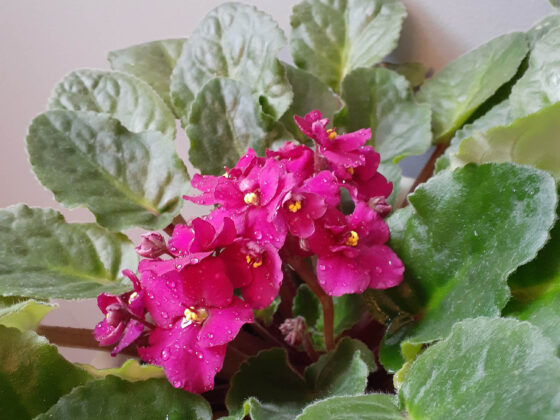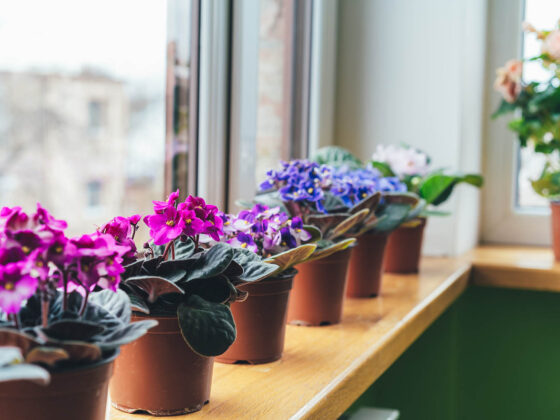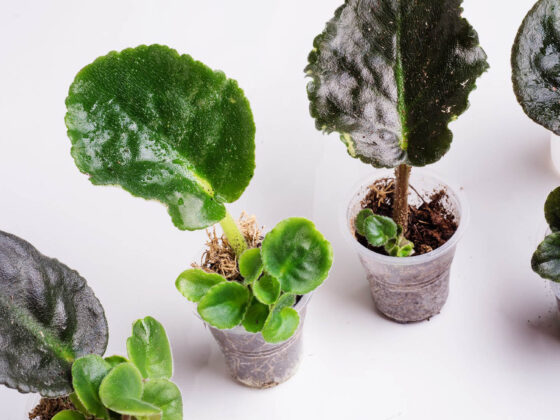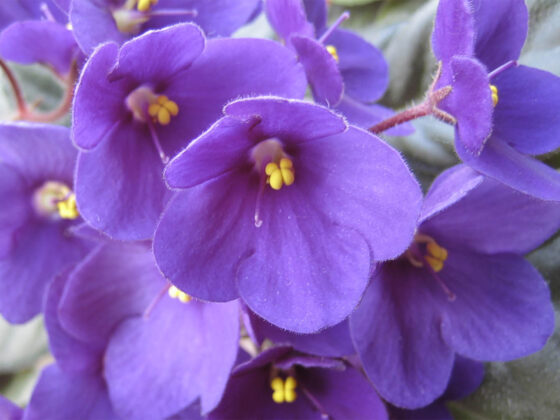One of the coolest things about African Violets is how easy they are to reproduce. The usual method is to pluck off a leaf and use it to start a new plant. But did you know that you can also multiply Saintpaulias using their flower stalks? In this article, we’ll explain how to propagate African Violet blossom stems – and why you’d want to.
Flower stalks are a good way to multiply African Violet chimeras, which won’t grow true from leaf cuttings. To propagate African Violet blossom stems, cut them off the plant while they’re still blooming. Remove any flowers and buds, then plant the stalks in a moist growing medium and keep them in humid conditions.
African Violet cuttings tend to be very hardy, and that’s true of bloom stalks as well as leaves. Still, you’ll want to make a few preparations to give your baby plants the best odds of survival. We’ll talk you through everything you need to know to multiply your African Violet from blossom stems.
Why Would You Propagate African Violet Blossom Stems?
After all the work you’ve put in to get your African Violet to flower, why would you ever cut off its blooms? Can’t you just use the leaves if you want to propagate your plant?
In most cases, yes. But not if your African Violet is a chimera. That term refers to a plant with a complex color pattern that results from different genetic codes in different cells.
Note that we’re not just talking about variegation. Many African Violets with multicolored leaves or flowers have the same genome throughout their bodies. They’re just expressing different genes in different places. A chimeric African Violet has more than one genome, as though you fused two different plants together.
Why does this matter? Because when you root an African Violet leaf, all of the resulting growth starts from one solitary cell. So the new plant will only have one genotype even if it came from a chimera. It might still be very pretty, but it won’t have the distinctive coloring of its parent.
But propagating African Violet blossom stems is more like reproducing them from suckers (which we describe in this article). The growth nodes on the flower stalk hold a complete snapshot of the plant’s genes. So when you plant it and let it grow, you’ll get a clone with the same coloration.
As a bonus, rooted flower stalks grow new foliage more quickly than leaves do. In a way, they’ve already got a head start on the process. So even if your African Violet isn’t a chimera, you could propagate its blossom stems to get faster results.
Is Your African Violet a Chimera?
If not all multicolored Saintpaulias are chimeras, how do you know if you have one? Ultimately, the only way to be certain is to try to propagate it and see. If it can pass on its color pattern through suckers or blossom stems, but not through leaves, it’s a chimera!
That said, there are quite a few well-known chimera varieties out there. You can often find lists of popular ones online (like this one), though these are by no means comprehensive.
One very telling clue is if your African Violet has a “pinwheel” pattern on its flowers. This is one of the most widespread kinds of chimerism in Saintpaulias. A pinwheel flower has a bold stripe of secondary color down the center of each petal.

Many hobbyists use the terms “pinwheel” and “chimera” interchangeably, but there are other types of African Violet chimeras. One popular example is the Harmony’s Little Stinker cultivar, which has chimeric leaves rather than striped flowers.
The Anatomy of African Violet Blossom Stems
Before we continue, we should define our terms. When we talk about blossom stems, we don’t mean the small shoots that hold up the individual flowers. Those are the pedicels. The part you use for propagation is the slightly larger stalk from which all the pedicels branch out. Botanists call this the peduncle, but “blossom stem” or “flower stalk” will also work for our purposes.
When you follow the peduncle down toward the base, you’ll find a point where all the branching pedicels come together. Just below that are two tiny leaves (technically called bracts). This is the crucial piece of the flower stalk for our purposes. When you propagate African Violet blossom stems, the new growth comes from the joints (axils) between bract and peduncle.
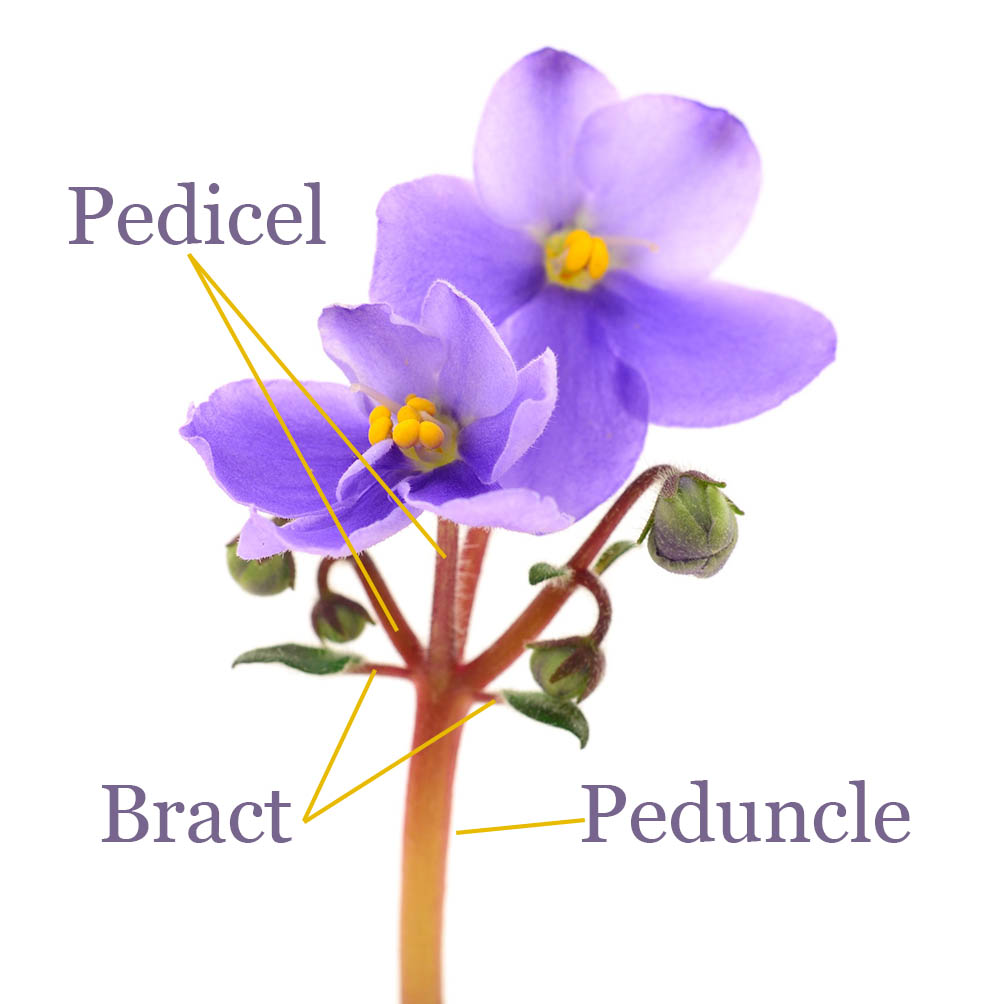
Getting Ready to Propagate African Violet Blossom Stems
Timing is the first thing to keep in mind when trying to reproduce your African Violet from flower stalks. Obviously, you’ll have to wait until your plant is blooming before you can get started. But you can’t wait too long. A blossom stem is no longer viable once all its flowers have bloomed and aged out.
The best time to strike is when your African Violet is blooming but some of its buds haven’t opened yet. If you act now, you’ll know the peduncle is still alive and healthy.
Here’s what you’ll need to have on hand when you get started:
- Blades. For the small cuts you’ll be making, a craft knife or a pair of pruning scissors work best.
- Disinfectant. Always disinfect your cutting tools to avoid infecting your plant. Rubbing alcohol or a 10% dilution of bleach are good options.
- Pots. You can place two or three blossom stems in the same pot, but don’t crowd them too much. Very small pots are best, to reduce the chances of overwatering.
- Rooting medium. You can usually get away with the same kind of potting mix you’d use for adult African Violets. See this article for suggestions. Some growers prefer to go with pure sphagnum moss, which holds a nice amount of moisture and discourages rot.
- Coverings. Something clear but impermeable to cover up your baby plants. Plastic baggies, Tupperware, mason jars, etc.
How to Propagate African Violet Blossom Stems
Your African Violet is blooming and you’ve prepped all your tools. You’re ready to start cloning your plant. Here’s how:
Step 1: Slice and Trim the Flower Stalks
Sanitize your tools and snip the peduncles off your Saintpaulia. Leave about ¼ to ½ of an inch of stem below the two tiny bracts we identified earlier.
Cut at a 45-degree angle to ensure that the stems have lots of surface area for root growth. Then trim away all of the flowers, buds, and pedicels above the bracts. You don’t want your clone trying to support any flowers. That’s a waste of the precious energy that it needs for growing roots and foliage.
When you’re done, you’ll be left with a small nub of the blossom stem with two teensy leaflets at the top. It should look almost like a freshly sprouted seedling.
Step 2: Prep the Pots
Moisten the potting mix and put it in the containers. It should be damp, but not sopping wet – about as moist as a wrung-out sponge. Then use a chopstick or something similar to poke little holes in the potting mix for your blossom stems. You don’t want to have to force them into the soil.
Step 3: Plant Your Flower Stalks
Insert your African Violet stems into the holes you’ve made. The leaves should be right at the level of the soil. In the best-case scenario, each bract will give rise to its own plant. They’re basically two tiny suckers branching off from the flower stalk.
Seal the pots up in baggies or cover them with your containers. This will help keep humidity from escaping, maintaining an even moisture level. In theory, you may not need to water them the whole time they’re taking root. That makes it easier to avoid overwatering, which is a big danger for the young root systems of your clones.
Step 4: Wait and Watch
Find a place where your baby African Violets will be warm and well-lit, but won’t sit right in the sun. Direct light can scorch their leaves, especially when you close them up in small containers.
Keep an eye on your plantlets as they grow. Small clusters of leaves should start poking up from the axils on either side of each blossom stem. Sometimes one will push out a flower bud instead. If this happens, pinch or clip it off. Again, your plant can’t spare the resources for making blooms right now.
Step 5: Transplant Your African Violets
After around 6 months, your clones should be large enough that you can transfer them to individual pots. There’s no hard and fast rule for when they’re ready. It’s all about whether you feel confident you can split them off and move them safely.
Once you’re ready, you can uproot them and separate them from the blossom stems. Pinch them firmly at the base of their stalks and gently peel them apart. If you feel a lot of resistance and you’re worried about damaging your clones, use a disinfected knife instead.
You may break some of the roots in the process. That’s okay. After all, this whole process only works because African Violets can grow new roots easily! As long as the little clump of foliage is intact, your plant should still be able to take root and grow in its new home.
Moisten the potting mix before the transfer, just like in Step 2. Then pop your new Saintpaulias into their long-term pots. Cover them again, as in Step 3, to ease the transition. Leave them under wraps for a few weeks.
When your clones begin producing new blossom stalks of their own, you’ll know they’ve grown into mature, healthy African Violets.
Final Thoughts
Even if you don’t have chimeric plants, it can be fun to propagate African Violet blossom stems. Experimenting with new techniques is how you become a better indoor gardener! We hope you’re excited to try this method out with your own African Violets.






